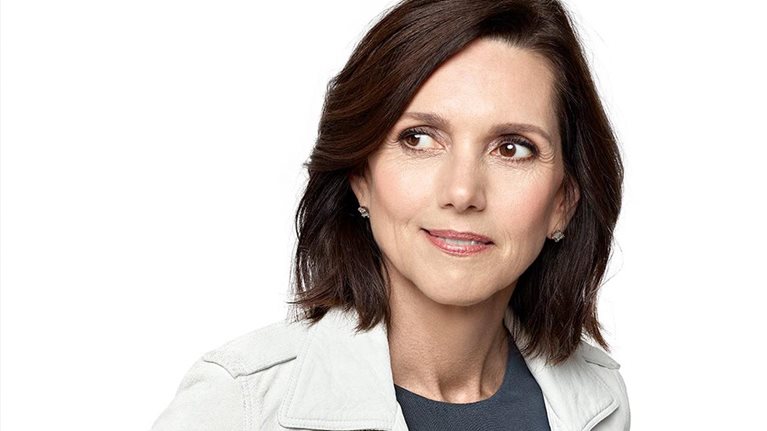In his new book, The Voltage Effect: How to Make Good Ideas and Great Ideas Scale (Currency, February 2022), economist John List argues that scaling is subject to the “Anna Karenina principle,” which dictates that even if one factor is wrong, the entire endeavor will fail. A longtime professor at the University of Chicago, List has worked as chief economist at Uber, Lyft, and now Walmart. In this episode of the Inside the Strategy Room podcast, he talks with McKinsey senior partner Yuval Atsmon about how business leaders can assess whether an idea has the power—or the voltage—to successfully scale. This is an edited transcript of their discussion. For more conversations on the strategy issues that matter, follow the series on your preferred podcast platform.
Yuval Atsmon: What motivated you to write a book about scaling now?
John List: Around 2015, a confluence of events caused me to start thinking about scaling. I was the chief economist at Uber, and we were thinking about new ideas that had a good shot of scaling. I had also started a preschool in an underserved community south of Chicago that, by 2014, had received good results. I went to policy makers saying, “I have a great curriculum, we need to scale my program,” and the typical response was, “Your program looks great, but don’t expect it to happen at scale.” When I worked in the White House on programs like Energy Star to promote energy efficiency, we would constantly ask ourselves, “Do we think that program will scale?”
That confluence led me to ask what we know scientifically about scaling, because the policy makers’ comments didn’t feel like science, and our discussions at Uber also felt more like art than science—we were adding data, but it was more gut feeling and “fake it till you make it.” My goal was to write academic papers on the science of scaling, but if you want to change the world, you need the world to kick the tires of your ideas. Plus, the thread of scaling runs through all parts of life, and the factors that cause ideas not to scale manifest themselves in all settings. Economics is life, and life is economics.
Yuval Atsmon: I was struck by how much of your book is about avoiding mistakes. You capture that in the Anna Karenina principle.
John List: Yes. The first thing people need to think about in the idea search phase or when considering scaling is, what are the warts? It shows you where you should make improvements. It then gives you a recipe for step two, which is thinking about the total addressable market and how to expand it. If there is a wart, such as that the addressable market is too small, how can you expand it before you scale or as you scale?
Yuval Atsmon: The first mistake you talk about is what you call “false positives.” What are these?
John List: If the idea never had voltage to begin with, why were you tricked? In more than half the cases where a government tries to scale an idea, it never had voltage, and when you try to replicate it, it doesn’t work. The data were lying to you, or you got a bad draw of data. In the private sector, behavioral economics comes in. Take confirmation bias, where a decision maker has an intuition about what should work, and when you bring data showing it worked, they say, “I was right. Let’s scale this thing up.” If the data shows it did not work, the person says, “There is a flaw somewhere. We didn’t collect the right data.” Why? Because typically, the person with the idea will test the idea, champion that idea, and then get the bonus for the idea. Is this how idea generation, dissemination, and scaling should happen?
Every organization should have a scale unit that includes a naysayer who says, ‘I don’t think that idea will work, and I will generate data to prove it.’
Every organization should have a scale unit that includes a naysayer who says, “I don’t think that idea will work, and I will generate data to prove it.” That person will come up with some so-called moderators—settings where the idea doesn’t work—and that will lead you to make the product or service better.
Yuval Atsmon: What if the idea is valid but it is not as scalable as people assume it to be?
John List: If you have jumped over the first hurdle and your idea has voltage, for how many people will that voltage be real? In other words, what is the size of the total addressable market? Scaling is about retaining customers as much as adding new customers, so the challenge is partly about the stickiness of your idea. Can you develop incentive regimes to make your product or service stickier? That’s how people should think about membership and points programs—essentially, they are economic mechanisms to make customers come back for more.
If the market does not already exist, how can I gather information to verify whether the product or service is viable? One way is to look at substitutes and use hedonic regression to predict what an offering with different features would do in the marketplace. Another option is a focus group, but there are two big issues with that. First, when you bring in a group of people to, say, test a hamburger, they are probably hamburger lovers, so they are already open to your product. The second issue is that when you ask a focus group member, “Will you buy the hamburger for $4?” and they say “yes,” then you raise the price and they keep saying “yes,” what incentive does that person have to tell you their real demand for the product? I compare it to option value. In asset markets, people pay for an options contract that might say, “In six months I can buy Alphabet stock at $120 a share.” The focus group member, on the other hand, is getting an option for a new product for free. They’re essentially saying, “If you introduce it, my choice set is richer, but there is no cost to me if I don’t purchase.”
Yuval Atsmon: This is something to watch out for with products that depend on much higher price points than people may previously have paid for similar products. We see that with sustainability offerings. Ten years ago many products failed, because few people were willing to accept the inconvenience or higher price of those greener goods.
John List: You’re 100 percent right. We ran some surveys at a rideshare company, and customers said they would pay to get a green car rather than a car that runs on fossil fuels. The surveys made it look like a viable market, so we ran a pilot and found that when you charge 50 cents or $1 more for that car, the demand goes to zero. It’s one thing to state your ambitions and preferences in a survey and a completely different thing to back them with real money. We find that in every market. Now, the revealed preference for green products is positive and growing, but I believe the expectation is still exaggerated in most cases.
Yuval Atsmon: The next hurdle you describe is an idea that works but is hard to scale because it has some unscalable ingredients. Can you elaborate on what you mean?
John List: This is about asking, “Was there something special that produced our initial success but could not be replicated at scale?” Many restaurants have great success, and their owners say, “If I could scale to 50 or 100 restaurants, I’d literally be cooking,” but a lot of them fail. If the initial success was based on the chef—a unique human—it will never scale because unique humans don’t scale. If you can convert that unique human into a process, sometimes that works. That’s happening now in computer programming, where machines can program as well as humans can or better. But if Uber or Lyft were only able to work with Michael Andretti or Al Unser Jr., they would not scale. If they can use ordinary people, they have a shot.
If the initial success was based on a unique human, it will never scale because unique humans don’t scale.
So you need to figure out early what your non-negotiables are. When you scale across countries, the rules and customs change, minimum-wage laws may change, and if those changes prevent you from scaling your inputs, you’re dead.
Yuval Atsmon: In your book, you talk about unintended consequences or spillovers—things that cause scaling efforts to fail. Can you give some examples?
John List: Yeah, the old “negative externality” case. In “economese,” that means that an exchange between two people in a market negatively affects a third party in important ways. In 1968, the US government mandated that every new car have seatbelts. In 1975, my colleague Sam Peltzman found that zero lives had been saved in those first years. He argued that people who were wearing seatbelts drove more aggressively, undoing the benefits of seatbelts. That’s an individual type of spillover; there are also market-wide spillovers.
Yuval Atsmon: That brings to mind price promotions. They will create immediate uplifts but may change consumers’ willingness to pay more for future products you launch.
John List: Exactly. It also affects related products that consumers purchase. The complementarity in baskets of goods or services that people buy is the next frontier of thinking about price relationships. Economists call these own-price elasticities and cross-price elasticities. Next-generation machine learning models will be able to forecast where to take advantage of these interrelationships and where to give surplus back to consumers.
Subscribe to the Inside the Strategy Room podcast
Yuval Atsmon: The final vital sign of scalable ideas is around cost. Can you discuss that?
John List: The supply side of scaling is interesting. Policy makers tend to think about the benefits [of scaling] and who gets them, whereas most entrepreneurs start on the supply side. This makes sense because governments are monopolists: they don’t need to worry about competitors; they need to worry about making more people’s lives better.
In contrast, a company needs to think about the cost trajectory for two reasons. The first is that, as you scale, you will go down the demand curve as people are less willing to pay for your product. So as you scale to more people, you want to shift the demand curve out and take advantage of the supply side.
The second reason is that scale can be a barrier to entry. An offering with significant economies of scale has an important first-mover advantage because entrants will need deep pockets to compete with you. If I had to hire 20,000 teachers, I would have to hire them away from another organization, and to do that, I would need to go up the supply curve by paying them more. If I’m trying to scale with unique elements, or unique inputs, and the only way I can get them is to increase my budget, I have a supply-side problem. That’s how the uniqueness of the inputs and the supply side work together.
Yuval Atsmon: One example that brings this to life is the streaming wars. We have seen big investments in that space and that spending on content has been growing disproportionately to the audience for that content. Streaming wars may also exemplify the dilution principle: once you add mediocre content around baseline strong content, people’s perception of all the content drops.
John List: You’re exactly right. I wrote a paper about 20 years ago titled “The ‘more is less’ phenomenon,” based on an experiment where I auctioned off ten baseball cards as a group. Then, in another auction, I added three defective cards to the original ten. You would think that people would bid more because it’s the ten cards plus the three defective ones, which together still have value. But they bid less because they looked at the three defective ones and interpreted the other ten as being of lower quality.
Yuval Atsmon: Let’s talk about your advice for executing ideas that people want to scale. You mentioned incentives earlier—what’s the right way to use them?
John List: When people hear that an economist will talk about incentives, they think, “He will say that money is important.” And I’m here to tell you that money is important, but the way you present the money is also important. Nonfinancial incentives are important, too, such as social image, social pressure, self-image. Social incentives are all around us, and we need to take advantage of them to implement incentives that can scale.
On the pecuniary side, bonuses usually take the form of cash at the end of the year, but you could move the money to the front end. In Chicago Public Schools, I gave teachers $4,000 up front and said, “If your students achieve over the school year, you can keep the money. If they don’t, you will have to give some of it back.” I implemented similar measures in a manufacturing plant in China and in Wisconsin. In every case, people worked harder if there was a chance of their bonuses being clawed back.
I was leveraging loss aversion—people don’t like to lose things. Now, you may think, “That’s not practical because we can’t give people money and then take it back.” That is true, but I only provisionally gave people money by setting up accounts where they could see it, but they couldn’t spend it yet. If they did not achieve over the year, they saw the amount drop.
Yuval Atsmon: One of my favorite chapters in your book is the one about revolution on the margin. It’s so obvious that returns on investment are nonlinear, but most of us focus on averages.
John List: Rule number one when I teach Economics 101 is: economists think on the margin and other people think in averages, and those others are wrong. People often say more data is better. It’s not. You need to use the thinnest cuts of data that you can. If you are trying to forecast what will happen in the next step, it is better to rely on what happened in the last step than 25 steps back. The only way what happened 25 steps ago makes sense to use is if that was a special regime that you are likely to enter in the next step.
Yuval Atsmon: That is also our experience. Complicated models can end up telling you what worked before instead of what will work next. People escalate their commitments irrespective of the opportunity simply because of the effort that they have already put in.
John List: In economics, it’s called “opportunity cost.” We should always understand and respect the opportunity cost of time and resources. Humans don’t quit enough for two main reasons. The first is that society tells us quitting is repugnant. The second is that we neglect our opportunity cost of time. I surveyed people who had recently quit their jobs, asking them why. Reason number one: “The boss no longer appreciated me.” Reason number two: “I didn’t get the promotion.” Reason number three: “I didn’t get the bonus or raise.” The list goes on, but every reason was about the person’s current lot in life. It was never, “My opportunity set got better.” When you pivot away from something, you should be just as likely to pivot toward a better opportunity.
Humans don’t quit enough for two main reasons. The first is that society tells us quitting is repugnant. The second is that we neglect our opportunity cost of time.
The time to quit is when your best outside opportunity exceeds your current opportunity. You should periodically look around, but most of us don’t because we say, “I’ve invested so much in this idea, I can’t give up on it now,” or, “I’ve gone down this hole for so long, and I have to have grit.” That’s called the “sunk-cost fallacy.” I promise you: if you are digging down a dry well, you can dig another five feet for another five years, and it will still be dry.
Yuval Atsmon: In the last chapter, you talk about scaling cultures. It’s another idea that is hard to get right and whose importance is often underestimated.
John List: As an academic, I did not appreciate the importance of organizational culture because academia is more of a lone-wolf lifestyle. That changed after my research team visited villages in Brazil. In one, a group of people went out to fish in teams and brought that teamwork back to their community. The community had great public-good provision. In the community next door, people fished solo, and they brought that attitude back to the community, where there were many fewer public goods.
Now, when you talk about culture, it’s important to define it. I think of culture in two ways: Does it allow people to reach their productivity frontier, and does it make people feel safe, comfortable, and valued?
Yuval Atsmon: In founder-led companies, the culture mimics the founders, so those leaders need to be aware of their leadership style.
John List: That’s a great point. The culture is an extension of the person, and it often needs to be because the founder has great insights. But I have learned that going from zero to $500 million is very different from going from $500 million to $10 billion, and it often takes very different individuals to carry off each of those stages.


